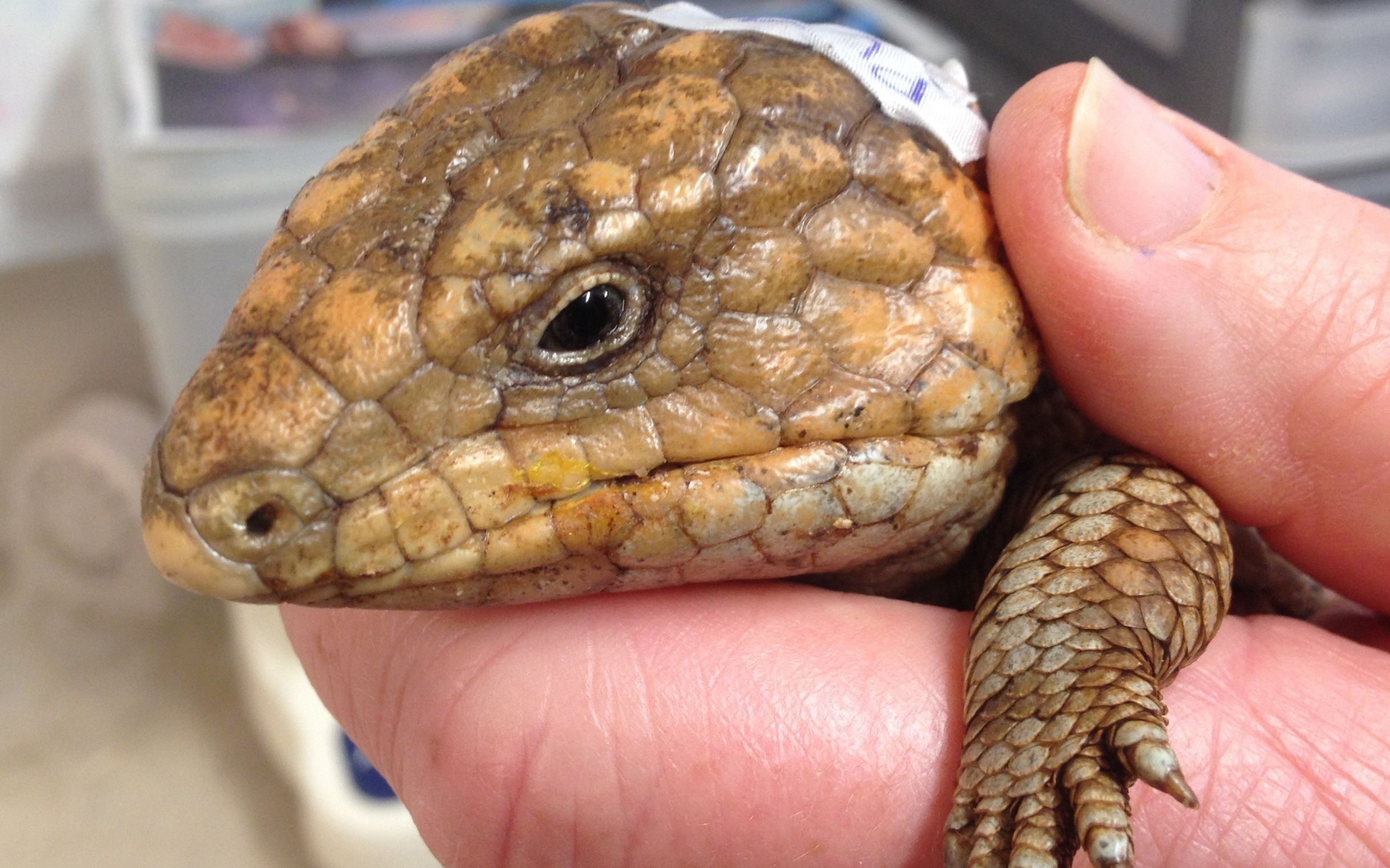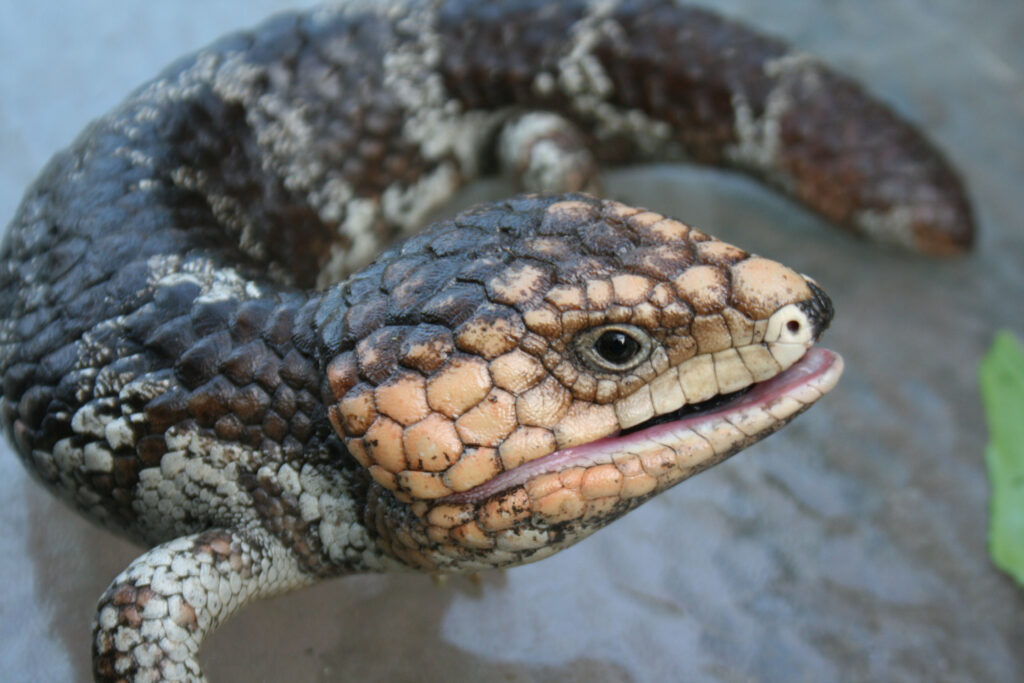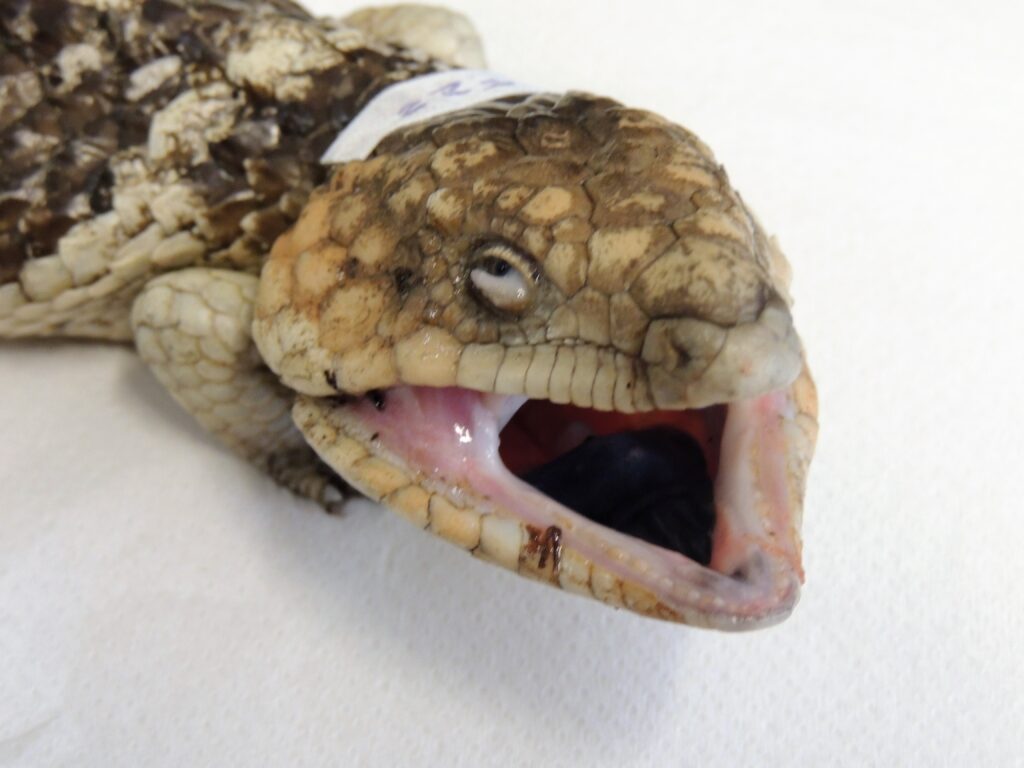A mysterious respiratory disease has been striking down wild shingleback lizards, or bobtails, since the 1990s in WA.
It’s not influenza and it’s no threat to humans, but reptiles infected with “bobtail flu” suffer flu-like symptoms—runny noses, watery eyes, sneezing and lethargy.
If you thought the dreaded “man flu” was bad—bobtail flu is far worse.
Without treatment, sick bobtails can become so emaciated they whither away and die.
Bobtail flu is one of WA’s most urgent threats to wildlife says Dr Mark O’Dea Murdoch University veterinary virology lecturer.
“It’s a nasty disease. They come into wildlife care centres…looking really miserable.”
“[Some] have just wasted away to almost skin and bone.”
“They lose their bobtail because that’s where they store their fat [and] don’t seem to recover… unless they get treatment.”
The good news is antibiotics, inhaling distilled water mist to clear their lungs and rest saves approximately 80% of infected bobtails.
A GROWING PROBLEM
Wildlife carers suspect the disease is on the rise in WA.
Prevalence is hard to work out because the number of bobtails in the wild is unknown and wildlife carers don’t see healthy lizards.
But Mark says the number of recent cases is a worry.
“In 2015 Kanyana Wildlife Rehabilitation Centre (KWRC) received about 200 bobtails and of those, 40% came in because of this flu problem,” he says.
“To have an infectious disease making up 40% of your intake is pretty phenomenal.”
“I think it’s urgent that we do some more work into it.”
AN EXCITING DISCOVERY
Mark and Dr Bethany Jackson, Murdoch University wildlife veterinarian, took saliva swabs from healthy and sick bobtails admitted to KWRC to try to unravel the mystery.
They used next generation sequencing technology on the swab samples to compare infected bobtails’ DNA for a link.
Detecting a virus never before identified in Australian lizards was an exciting moment, Mark says.
They’ve tentatively named the virus Shingleback nidovirus 1.
Its closest relative is a virus thought to cause a respiratory disease in ball pythons in the United States.
“That certainly made us feel pretty confident that we had found something worth investigating further,” Mark says.
FRESH HOPE FOR BACKYARD BOBTAILS
The researchers have developed a diagnostic test for the virus.
They hope their discovery will give fresh hope to the health of bobtails in WA, Australia and worldwide.
“I would be very surprised if this virus is only in WA,” Mark says.
They aim to team up with Flinders University researchers to investigate if bobtail flu is a national problem.
Their plan is to study how it’s transmitted, and see if there are bobtail populations immune to the disease or areas that haven’t been exposed to it.











